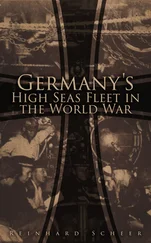1 ...6 7 8 10 11 12 ...17 Virtually unknown, she was airborne thanks to her father’s patronage and a modest fuel sponsorship arrangement with Charles ‘Cheers’ Wakefield, father of the Castrol brand of engine oil. But what made the combination combustible, and almost fatal, was her own searing ambition to be someone special. And three short weeks later she had realised that ambition. She was being mobbed by crowds of Australians wherever she put down, and bombarded with telegrams from Blériot, Einstein and King George V.
Amy Johnson was the first woman to fly solo to Australia. In the cockpit she wore leather when it was cold and cotton when it was hot, and she depended throughout her twenty-day flight on a four-cylinder, 110-horsepower engine pulling an aircraft with a spare propeller strapped to the outside of its fuselage. It was a breathtakingly modern thing to do. A handful of men had squeezed the 11,000 miles from Southampton to Sydney into a journey measured in days rather than weeks, but for a woman to attempt it – less than half a generation after being given the vote – was practically unthinkable. She had beaten Bert Hinkler’s record as far as Delhi, but it was not for speed that Australia adored her. It was for having shrunk the world more vividly and definitively than a strutting male action hero could ever have. Here was the girl next door (sunburned and overtired, it was true), whose next door was in Hull. She had a toothy smile, a perpetually awed voice and actually seemed to like Australia. She also had the strange aura of someone who had cheated death.
Johnson’s strategy for beating Hinkler’s record rested on the idea of flying in a straight line. As far as she could tell from the primitive maps that were all Stanford’s bookshop had for most of the journey, this would shave 700 miles off his route. Hinkler had looped south through Rome to Malta to maximise, he hoped, his number of nights on British imperial soil. Johnson headed straight for Constantinople via Austria. On the way, an overbearing crew of Viennese mechanics insisted on overhauling her engine but succeeded only in gumming up a spark plug. (This may never have come entirely ungummed; despite Johnson’s hard-won engineering certificate and her meticulous filtering of all the fuel that entered Jason ’s engine, one of the male pilots deputed to escort her on her victory lap of Australia wrote later, with ill-disguised satisfaction, that he had never seen ‘an engine in such appalling condition’ as hers.)
From Constantinople, Johnson had to find a way through Anatolia’s forbidding Taurus Mountains, and this is where her straight line became sinuous. As she approached the mountains around lunchtime on 7 May, they were covered by cloud. She climbed to stay in clear air, as she would years later with much less reason to be scared. But at 11,000 feet her ‘engine started an ominous coughing and spitting’, she wrote afterwards:
I descended to 10,000 feet and decided to try to follow the railway through its winding gorges … I had one very unpleasant moment when threading my way through an exceptionally narrow gorge with the mountains rising sheer on either side of me only a few feet from my wings and towering high above. Rounding a corner I ran straight into a bank of low clouds, and for an awful minute could see nothing at all. In desperation I pushed down the nose of the machine to try to dive below them, and in half a minute – which seemed to me an eternity – I emerged from the cloud at a speed of 120 with one wing down and aiming for a wall of rock. Once I could see where I was going it was easy to straighten the machine, but I was rather badly shaken.
Johnson’s passage through the Taurus Mountains was undoubtedly terrifying and it marked her graduation from suburban dilettante to Shackletonian adventurer.
From Aleppo she flew to Baghdad, with only one forced landing in the desert, then down the Tigris, over Basra and on to Bandar Abbas at the eastern end of the Persian Gulf, her journey advanced across the Middle East like a line on a map in a movie. It was followed with quietly mounting interest in newsrooms the length of Fleet Street.
On 10 May, Johnson flew clear over Baluchistan and into aviation legend. Landing that evening at Drigh Road aerodrome outside Karachi, she had beaten Hinkler’s Croydon-to-India record by two days and handed the papers an exquisitely constructed rolling news story. The tale of Britain’s lone girl flyer had been germinating nicely ever since a reporter for the London Evening News had chanced on her at the Stag Lane Flying Club’s hangar in North London five months earlier. He had written a prominent exclusive about a twenty-two-year-old blonde from the Midlands that was inaccurate in every detail except the headline: ‘Girl To Fly Alone To Australia’. The scoop was widely followed up. Then interest slumped. It began to return when she took off, and when she smashed her first record she was considerate enough to do so a short drive from a major node of the British Empire. Karachi had reliable telegraphic links to London and a surfeit of hungry stringers. Best of all, it was at least ten days from Australia, even in a Gipsy Moth. If this Johnson lass could only keep flying, her story had legs.
She obliged. She pressed on despite crash-landing on a playing field near Rangoon, impaling her wings on bamboo shoots on a sugar plantation in Java, going missing for twenty-four hours over the shark-infested waters of the Balinese archipelago and shuddering to a halt in the half-light among six-foot anthills near the Portuguese colonial outpost of Atamboea. Every night she threw herself on the mercy of those she found. Every day she fought fatigue, rain, heat, volcanic dust storms and a private catalogue of terrors including, but not limited to, cannibals, engine failure and death by corkscrew dive into the sea.
It made terrific copy. The News of the World wanted exclusive rights and opened the bidding at £500 while Johnson was in the air between Calcutta and Rangoon. Before she took off again, the Daily Mail had won the auction (which was handled by her father) for four times as much.
When she landed in Darwin on Empire Day, solid servants of that empire cried with joy from Hull to Canberra. One who confessed to tears was a retired naval rating who wrote to Johnson’s parents that ‘in all a long, adventurous life’ he’d seen nothing to compare with their daughter’s flight. ‘I was down the Java coast in 1858; you see I have been all that long journey myself and so have just a little idea of what it means. But then to do it alone, and in the air; it is more than wonderful, it is marvellous.’
The use of ‘wonderful’ was a reference to ‘Wonderful Amy’, an instant, cloying hit that played in music halls from Clapham to Llandudno all that summer. Not to be outdone, the pseudonymous Wilhelmina Stitch divided her ‘Fragrant Minute’ column in the Daily Sketch into four breathlessly worshipful stanzas, ending:
Amy! For ever more your name will stand synonymous with pluck ;
And when we weary of life’s game, or when we whine and blame ‘our luck’ ;
We’ll think of your immortal plane and spread our wings and try again .
Johnson’s flight to Australia was a singular achievement: pure in conception, pure in execution and perfectly encapsulating the escapist yearnings of a nation ground down by the Depression. But it was conjured from a complicated life.
As a teenager Amy had been a tomboy and a rebel. When she ‘grew up’, which she never really did, she combined soaring ambition with morbid self-doubt, vanity with shyness and outward prudishness with a serious libido. At the Boulevard School in Hull she was the only girl who could bowl overarm in cricket, and she led two mutinies. One of these involved wearing soft straw Panamas instead of hard straw boaters because she hated straw boaters and because her more vivacious sister, Irene, had moved to the more exclusive Hull High School – where they wore Panamas.
Читать дальше












